Lloyd’s of London is not an insurance company. Rather, it is an insurance market founded in the 1600s when Edward Lloyd began renting out space in his coffee shop to marine underwriters. Lloyd’s current headquarters is a masterpiece of modern architecture built in the Bowellism style, where interior space is maximized by placing the building services, such as ducts, sewage pipes and elevators, on the exterior. The building may be modern, but the market continues to operate much as it did in the early days. Insurance brokers still bring risks, in person, to underwriters who evaluate, price and accept the risks in a huge central underwriting space known traditionally as “The Room”.
Below are highlights from March 21st in London, UK. Click any image for a larger view, or click the position to view the location on a map. And a live map of our current route and most recent log entries always is available at mvdirona.com/maps
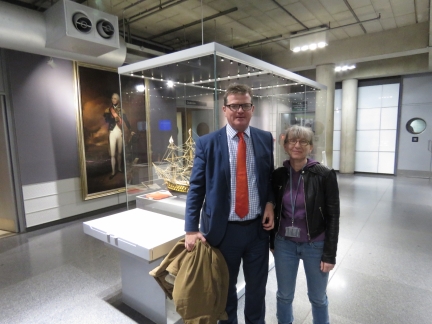 |
Richard Murray
Position: 0 4.90, 51 30.75
Inside the Lloyd’s of London building with Richard Murray, aka “Muzz”, who invited us for a tour of the striking building. Muzz is a Lloyd’s Insurance Broker with Bannerman Rendell and a friend of Andrew Bate, who introduced us.
Behind us is a portrait of Admiral Lord Nelson and some of The Nelson Collection. Lloyd’s association with Admiral Lord Nelson goes back to the Battle of the Nile in 1778 when a Lloyd’s committee raised £38,000 (about £3.7M today) to help the wounded and bereaved. The company has since amassed a large collection of Nelson artefacts and memorabilia. |
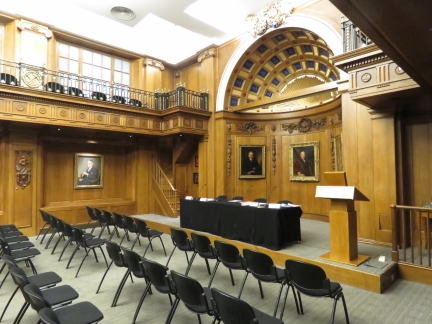 |
Old Library
Position: 0 4.90, 51 30.75
The 1986 Lloyd’s building is modern, but is full of history. It was constructed on the site of their 1928 space, with several of the original parts preserved. This is the beautiful Old Library, where portraits of previous Lloyd’s chairmen ring the walls. The room was preserved at its original location and the modern building built around it.
|
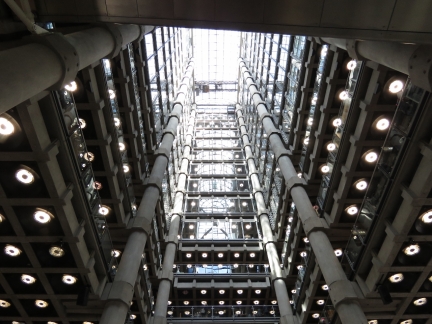 |
Atrium
Position: 0 4.90, 51 30.75
The light-filled multi-floor atrium is the centerpiece of the Lloyd’s building.
|
 |
The Rostrum
Position: 0 4.90, 51 30.75
At the Rostrum with the Lutine Bell. The bell was salvaged from the HMS Lutine, lost in 1799 carrying £1M in gold. Traditionally the bell was rung to mark news of an overdue ship, once to indicate a lost vessel and twice on a safe return, so that all brokers and underwriters learned the news simultaneously. More recently it is rung only for ceremony and mourning.
|
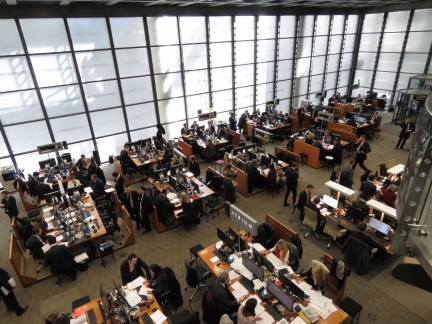 |
The Room
Position: 0 4.90, 51 30.75
Lloyd’s operates as a market place where insurance brokers bring risks, in person, to underwriters who evaluate, price and accept the risks at their ‘boxes’. The name derives from Edward Lloyd, who in the 1600s began renting out spaces he called boxes in his coffee shop. The boxes are located in a huge central underwriting space known traditionally as “The Room”.
|
 |
The Adam Room
Position: 0 4.94, 51 30.74
When the Lloyd’s 1928 building grew too small, another was built across the street in 1958. The Adam Room, built in the late 1700s for the Earl of Shelbourne, was purchased at auction and transferred piece-by-piece to that new building. By the 1970s, Lloyd’s needed yet more space and the Adam Room was again transferred piece-by-piece to the newest building.
|
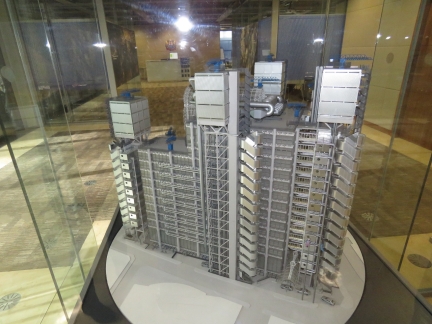 |
Model
Position: 0 4.96, 51 30.78
The Lloyd’s of London building is a masterpiece of modern architecture. This model shows its Bowellism style, where interior space is maximized by placing the building services, such as ducts, sewage pipes and elevators, on the exterior.
|
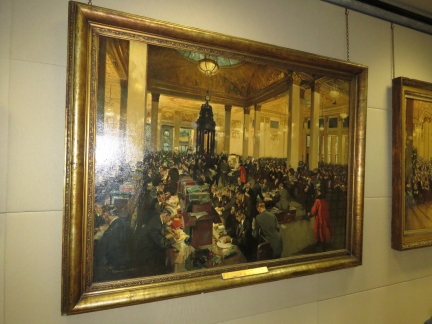 |
The Room in the 1940s
Position: 0 4.96, 51 30.78
A painting showing “The Room” in the 1940s with the Rostrum and the Lutine Bell prominent.
|
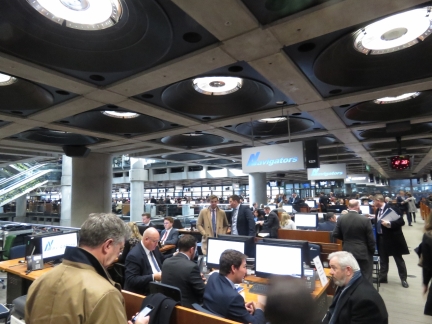 |
Navigators
Position: 0 4.95, 51 30.82
The Navigators insurance boxes at Lloyd’s. We used to have an umbrella policy with them until they got out of that market. At the time, they were one of the few who would write an umbrella policy without having an underlying home or auto liability policy.
|
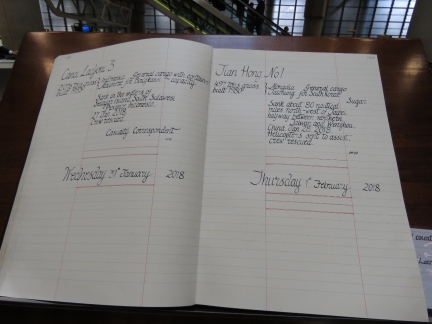 |
Loss Book
Position: 0 4.95, 51 30.82
The Loss Book, with details of lost ships, has been in use since 1774. Entries still are written in hand using traditional quill and ink. Loss books dating back to 1775 are stored in the Guildhall Library.
|
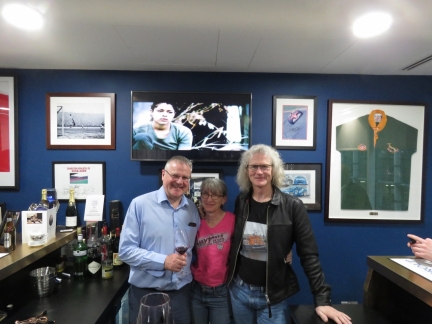 |
David Cox
Position: 0 4.94, 51 30.75
Muzz not only showed us through the Lloyd’s building but also took us to lunch at the historic George and Vulture, a Leadenhall pub dating to 1748, and for wine and cheese with some of his friends at Cheese at Leadenhall. At the end of the work day, we stopped at the private bar inside Cox Claims Group. Chairman David Cox, pictured with us, races cars all over the world and has participated in such major events as the Bathurst 1000 in Australia. We had an absolutely fabulous time meeting David and some of the Cox Claims Group team.
|
 |
Click the travel log icon on the left to see these locations on a map, with the complete log of our cruise.
On the map page, clicking on a camera or text icon will display a picture and/or log entry for that location, and clicking on the smaller icons along the route will display latitude, longitude and other navigation data for that location. And a live map of our current route and most recent log entries always is available at mvdirona.com/maps. |

If your comment doesn't show up right away, send us email and we'll dredge it out of the spam filter.